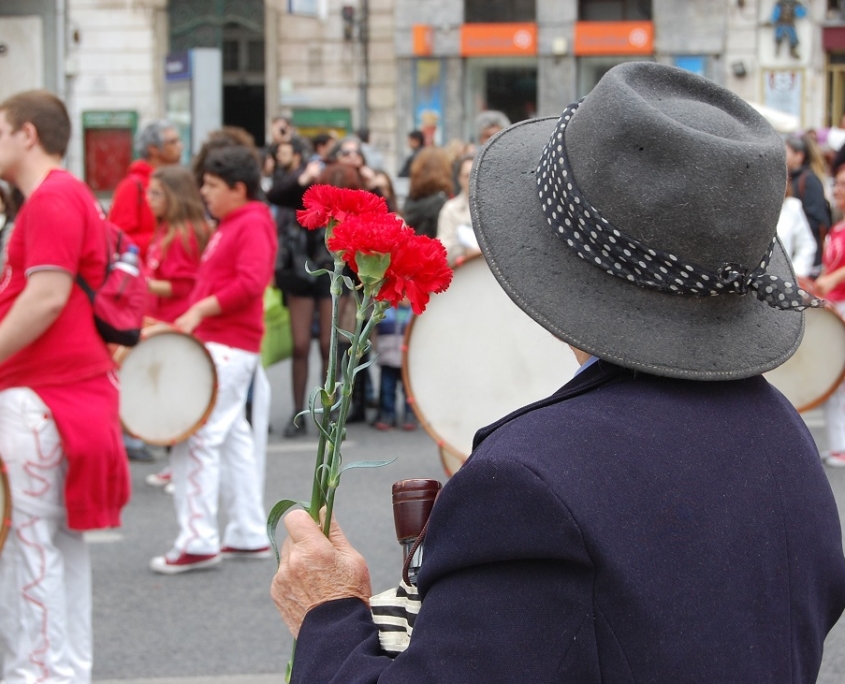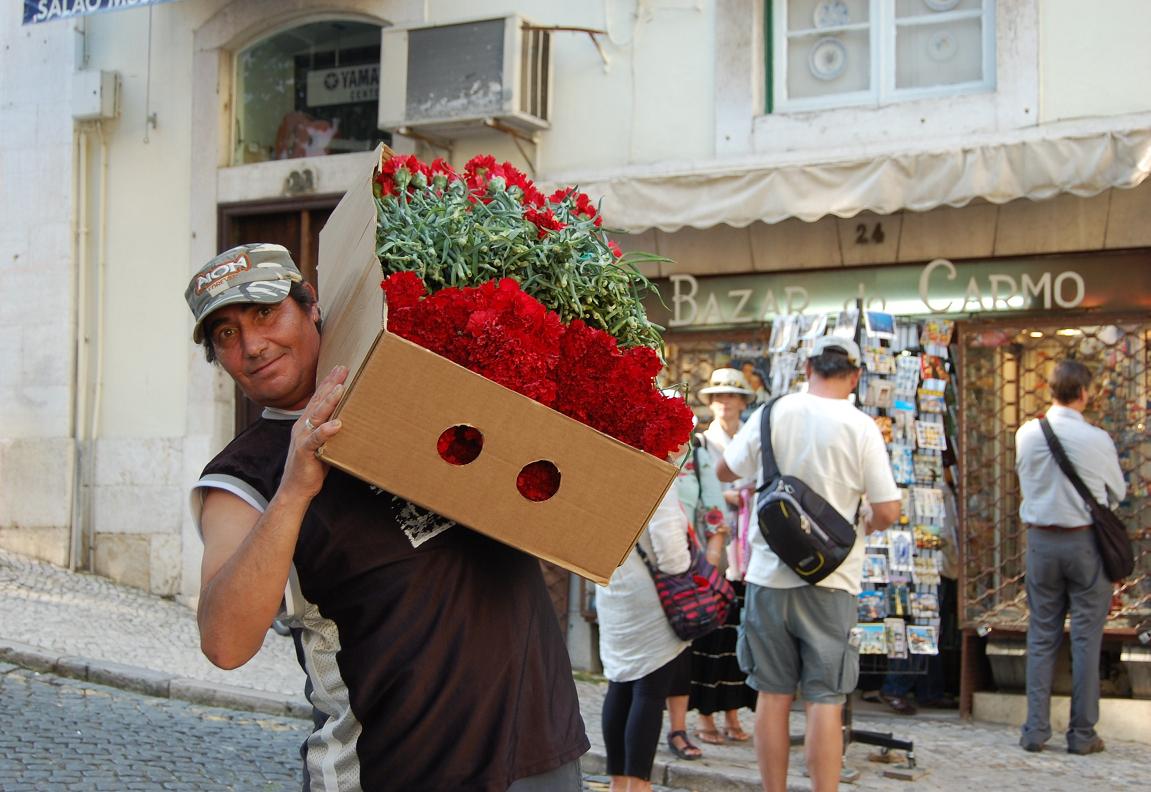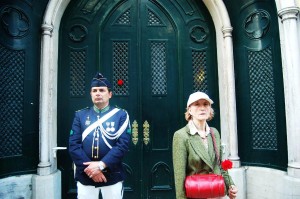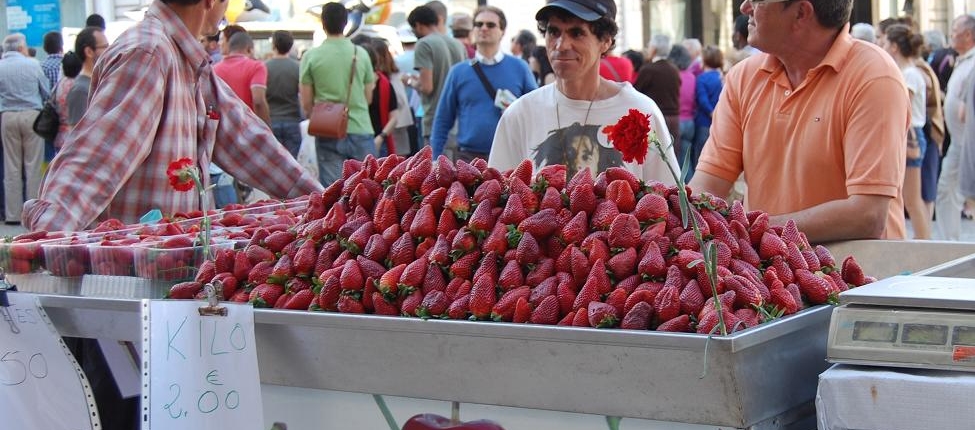Carnations of 25 April, symbols of the 1974 Revolution
Lisbon carnations.
Red carnations in Lisbon and Portugal on 25 April is a tradition. This day commemorates the 1974 revolution, which finally turned Portugal into a democracy.
If your steps take you near the Avenue of the Republic, do not hesitate to follow the parade. It is popular, still very popular, and it is an opportunity to be applauded. Indeed, onlookers, elderly people and those who prefer to see the parade pass by with a carnation in their lapel, clap their hands to show their support.
It is also an opportunity to peacefully follow a float: to remind people that it was the military who led the coup d’état of 25 April 1974, the parade is preceded by a war machine lent for the occasion.
It is covered with red carnations, to show which side it is on and the military with it.
The almost 3 km long Avenida da Liberdade changes its atmosphere on 25 April. The wide avenue, often compared to the Champs-Elysées in Paris, took on a festive and protesting air.
The “revolutionary” songs, in fact the magnificent poems of Zeca Afonso, author of Grandôla, the song that kicked off the 1974 revolution, are taken up again and again.
A carnation tradition with unclear origins
A few years ago, Indian sellers entered the dance. They made the Portuguese laugh: their carnations were of all colours. Hard to sell! The following year, the flowers had all turned red again.
But where does the carnation tradition come from? Many stories have circulated about the exact origin of the distribution of carnations on 25 April 1974. Many women have claimed that this is such an important role when you think of the symbol that this flower has become. Today, however, everyone agrees that Céleste Caeiro deserves credit for the initiative.
At the time, she was running the cloakroom of a restaurant that was celebrating its first anniversary. The owner had planned to give flowers to the ladies and serve port to the gentlemen.
Céleste was therefore asked to go and distribute the flowers. On the way she met the military and the revolution on the march… And to a soldier who asked her for a cigarette which she did not have, she offered a carnation which he then put at the end of his rifle.
Since then the revolution has been named after this flower. And red carnations are offered or given to each other as a sign of loyalty to democracy.
In Lisbon, the historical places of the Carnation Revolution.
- Carmo Square, where the military barracks where the head of the government at the time Marcello Caetano was overthrown (Chiado).
- The Museum of Resistance, located in the Aljube prison (Sé district) where opponents of the dictatorial regime were imprisoned and tortured.
- The monument to the 25th of April. A strange and controversial sculpture by the contemporary artist João Cutileiro. It is located at the top of the Eduard VII Park (Marquês Pombal district)
- Today, a simple plaque indicates the location of the former headquarters of the PIDE, Salazar’s political police. The names of the 4 people killed by this police force on 25 April 1974 can be read on it. Rua António Maria Cardoso, no 18-26 (Chiado)








